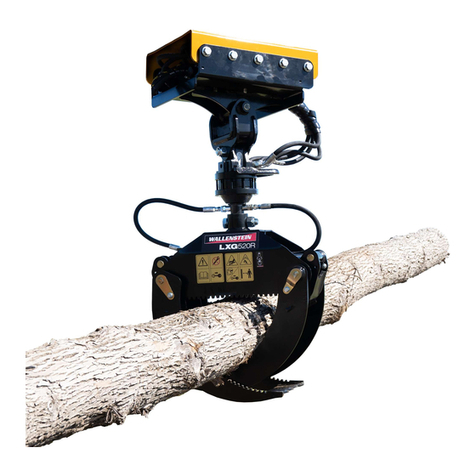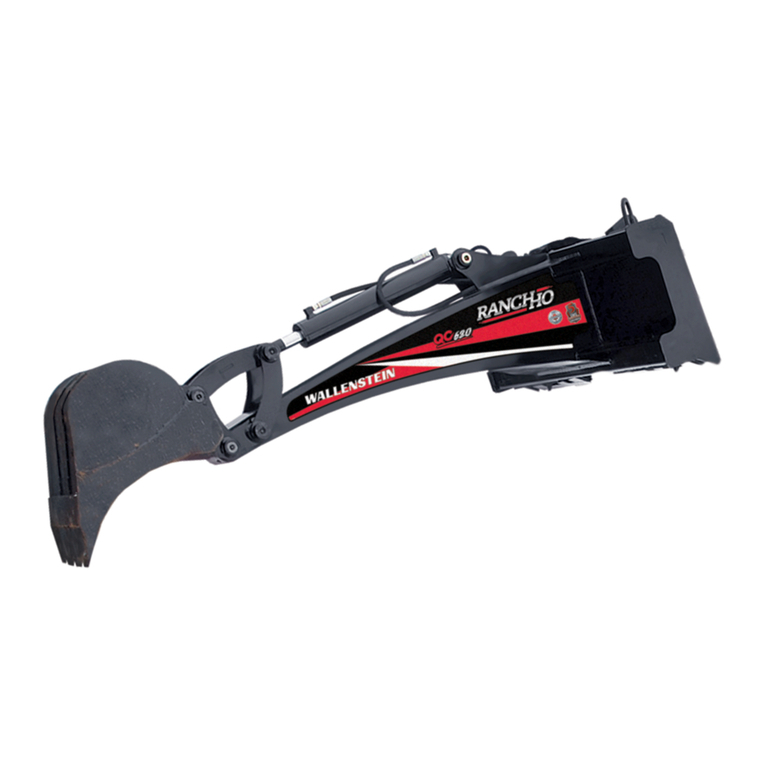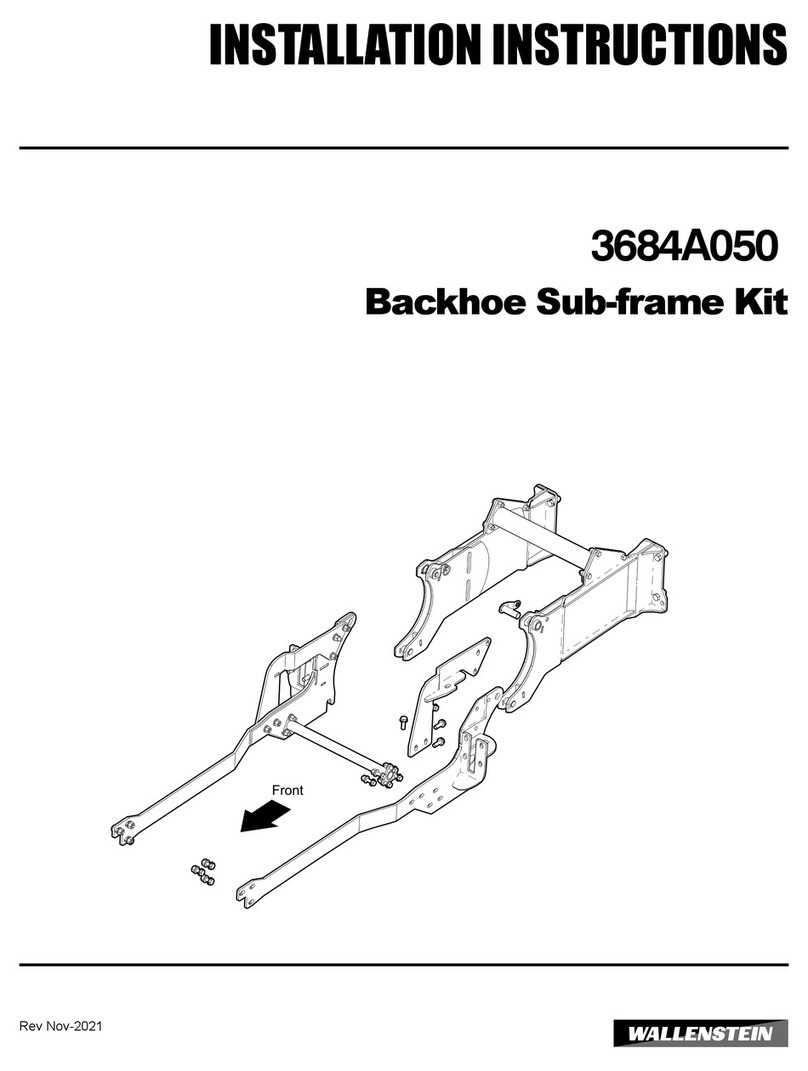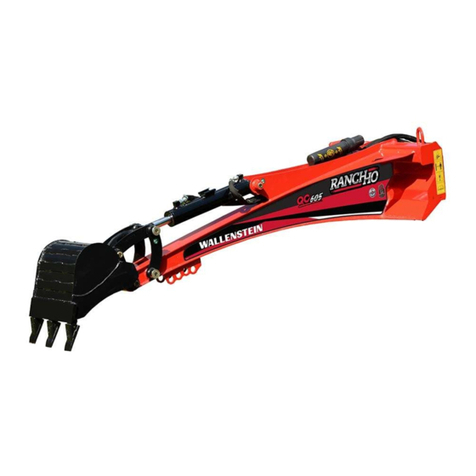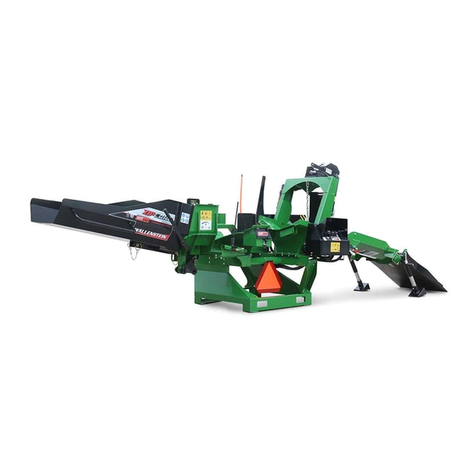
WP1624 Series
Firewood Processor
2
Table of Contents
1. Introduction ..........................................................4
1.1 Foreword .............................................................. 4
1.2 Delivery Inspection Report..................................... 5
1.3 Serial Number Location ......................................... 6
1.4 Types of Decals on the Machine............................ 7
2. Safety ....................................................................8
2.1 Safety Alert Symbol............................................... 8
2.2 Signal Words ........................................................ 8
2.3 Why SAFETY is Important...................................... 8
2.4 Safety Rules.......................................................... 9
2.5 Equipment Safety Guidelines ............................... 11
2.6 Making the Work Area Safe ................................. 14
2.7 Sign-Off Form ..................................................... 15
3. Safety Signs........................................................16
3.1 Safety Sign Locations.......................................... 17
3.2 Safety Sign Explanations ..................................... 23
3.3 Replace a Safety Sign ......................................... 25
4. Familiarization ....................................................26
4.1 To the New Operator or Owner ............................ 26
4.2 Job Site Familiarization........................................ 26
4.3 Operator Orientation ............................................ 26
4.4 Machine Components ......................................... 27
4.5 12 ft Conveyor Components................................ 29
4.6 24 ft Conveyor Components................................ 30
5. Controls ..............................................................31
5.1 Engine Controls................................................... 31
5.2 Operator Panel Hydraulic Controls ....................... 32
5.3 Operator Platform and Seat ................................. 34
5.4 Conveyor Controls .............................................. 34
6. Machine Setup....................................................36
6.1 Machine Positioning at Site ................................. 36
6.2 Lower the Live Deck............................................ 37
6.3 Block Dropper..................................................... 38
6.4 Log Stop Guide ................................................... 39
6.5 Saw Shield.......................................................... 39
7. Conveyor Setup..................................................40
7.1 Set Up a 12 ft Conveyor ...................................... 40
7.2 Set Up a 24 ft Conveyor ...................................... 40
7.3 Set the Conveyor Height...................................... 40
7.4 Set the Conveyor Angle ....................................... 41
7.5 Move the Conveyor Sideways.............................. 41
8. Pre-Start Checklist .............................................42
8.1 Before Starting the Engine ................................... 42
8.2 Check the Fuel Level ........................................... 43
8.3 Check the Engine Oil Level .................................. 43
8.4 Check the Hydraulic Oil Level .............................. 44
8.5 Check the Chain Saw Bar Oil Level ...................... 44
8.6 Check the Saw Chain ......................................... 44
8.7 Machine Break-In................................................ 45
9. Operating Instructions .......................................46
9.1 Start the Engine................................................... 46
9.2 Start Up in Cold Weather .................................... 46
9.3 Live Deck............................................................ 47
9.4 Infeed Conveyor.................................................. 48
9.5 Top Roller........................................................... 48
9.6 Cut Wood ........................................................... 49
9.7 Adjust the Bar Oil Flow Rate ................................ 51
9.8 Split Wood.......................................................... 52
9.9 Process Logs Quickly.......................................... 54
10. Transport...........................................................55
10.1 Transport Safety.................................................. 55
10.2 Prepare the Machine for Transport....................... 55
10.3 Raise the Live Deck............................................. 55
10.4 Attach and Unhook.............................................. 56
10.5 Trailer Breakaway System ................................... 57
10.6 12 ft Conveyor Transport Position ....................... 58
10.7 Transport the 24 ft Conveyor............................... 58
11. Storage..............................................................59
11.1 Storage Safety .................................................... 59
11.2 Place the Machine in Storage .............................. 59
11.3 Remove the Machine from Storage...................... 59
11.4 Place a 24 ft Conveyor in Storage........................ 59
11.5 Remove a 24 ft Conveyor from Storage ............... 59
12. Service and Maintenance.................................60
12.1 Recommended Fluids and Lubricants .................. 60
12.2 Machine Maintenance ......................................... 61
12.3 Change the Hydraulic Oil ..................................... 63
12.4 Engine ................................................................ 64
12.5 Battery................................................................ 65
12.6 Axles and Suspension ......................................... 66
12.7 Saw Chain Maintenance ...................................... 67
12.8 Adjust the Infeed Conveyor Chain Tension ........... 68
12.9 Adjust the Live Deck Chain Tension..................... 69
12.10 Adjust the Live Deck Drive Chain Tension ............ 70
12.11 12 ft Conveyor Maintenance................................ 70
12.12 24 ft Conveyor Maintenance................................ 71
12.13 Electrical System ............................................... 73
12.14 Weld the Machine ............................................... 73
13. Troubleshooting Guide.....................................74
13.1 Machine Troubleshooting .................................... 74

